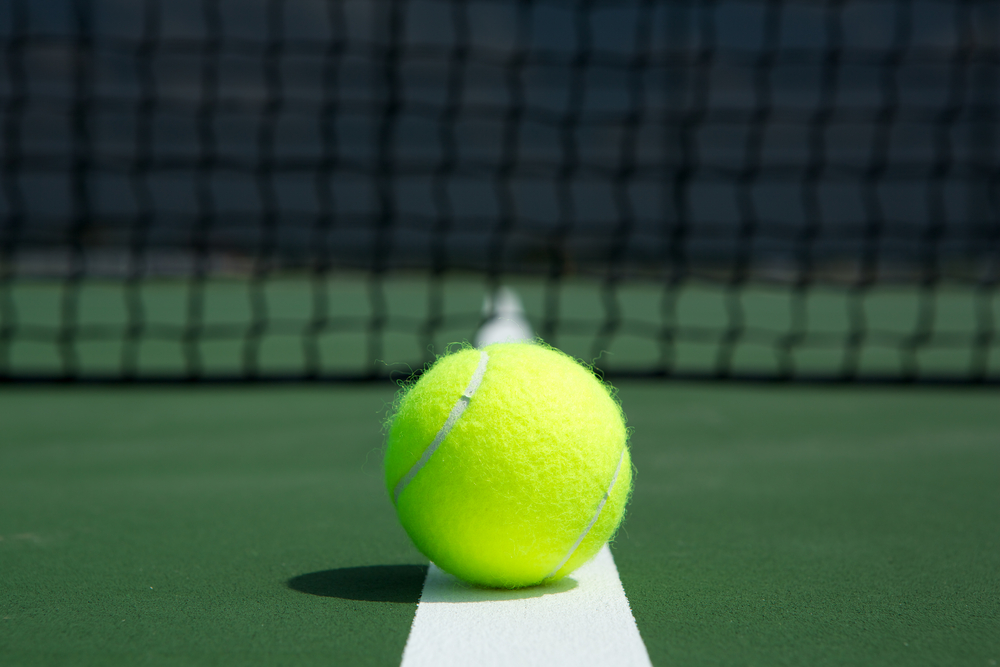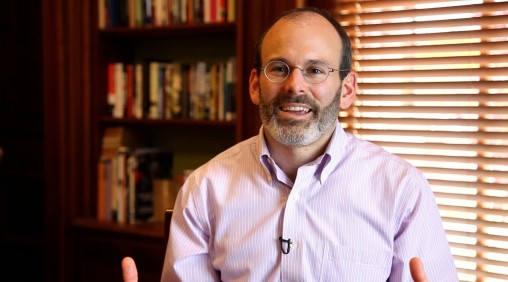When someone is really playing a great game of tennis, not only are they having fun, but the whole crowd is -because their joy is contagious.
- Your research in Claritas Mindsciences (formerly goBlue labs) combines mindfulness training with 21st century technology in order to help people improve their life and work. What is the underlying logic of the science of self-mastery?
It is pretty straight forward. Notice what it is like to get out of your own way, see how this helps you make fewer mistakes, perform better, and recover faster when you do, and repeat. Paying attention mindfully is the first part -it helps us see what it is like to trip ourselves up, and developing technological tools that can provide a mental mirror so we can see what this is like in our brains is the second part. We learn best by feedback.[tweet_quote] If you hit the ball into the net, you learn how to stop doing that by paying attention to how you hit the ball. [/tweet_quote] We can also learn how to be mindful, but the feedback we get here is more subjective, and can be skewed or even downright hijacked by our egos, because we often don’t want to see where we are not doing well, and would rather tell ourselves that we are performing ok rather than paying attention and seeing that we aren’t.
Some of the neuroimaging work we’ve done at Yale found a brain region that gets deactivated during effortless awareness. This is interesting, because it is the same region that gets activated when we do all sorts of self-referential processes, including getting anxious, craving something or even thinking about ourselves. Because it gets more activated with these things, basically when we get caught up in our own experience, and gets deactivated when we are being effortlessly aware, it is a perfect substrate for using as a neurofeedback tool. We are developing an EEG neurofeedback device that can give people feedback from this specific brain region (not just from the scalp like EEG feedback devices that are available today), so they can directly link up their own subjective experience with their brain activity. No more ego getting in the way and telling us that we are doing a good job of getting out of our own way; just direct feedback. The theory is that this will help people really notice what it feels like to be effortlessly aware, so they can tap into that more and more.
- You are developing novel neurofeedback technique to measure and train meditative “flow” states. What we can learn from athletes and what are the key elements of a peak performance?
In basketball, we miss the moment to pass the ball to a teammate because we are caught up in trying to score ourselves. [tweet_quote]In tennis we can’t shake off that last shot that we hit long or into the net, and as a result, make another mistake[/tweet_quote], and then start beating ourselves up more. And so the spiral begins . I think some of the key elements are 1) learning proper technique and 2) learning how to continually stay in the moment when we are performing or in competition. Good athletes do both of these -they go and practice carefully. [tweet_quote]They don’t just put in the hours, but they pay attention when they are practicing so they keep learning and optimize their performance.[/tweet_quote] As Vince Lombardi puts it, “perfect practice.” How many golf balls does Tiger Woods hit a day when practicing? How much does he pay attention during each hit? The second bit about staying in the moment can be fostered by mindfulness practice –when we see how painful it is not to be present, we start to learn more and more to be present, because it doesn’t get much better than this.
- In your recent TEDx talk you observe how we are lucky if we get into a flow state a few times in life. However, athletes seem to be able to tap into it more frequently. From your experience, what do you think makes a difference and how we can increase our ability to tap into our “inner athlete”?
This is where the curiosity and joy come in. [tweet_quote]When someone is really playing a great game of tennis, not only are they having fun, but the whole crowd is -because their joy is contagious.[/tweet_quote] When we are truly curious, and let go in each moment, we are right back in the game no matter how horribly the last shot went. And who doesn’t want to be in on the fun? The more joyful the game, the easier it is to shake off a bad shot, so these feed on each other -letting go is joyful, which feeds back to more letting go
- Many people get paralyzed by fear of failure or even so, the fear of success. In your lectures and talks you regularly point out we that we should become aware that fear is just made up of body sensations, sensations that we can choose to act on or not as long as we can be aware of them. What exactly is an “ability to choose” and how to avoid being sucked in reactive behaviors?
It is less an ability to choose not to fail (because we all would choose not to fail), and more the ability to not be sucked into the black hole of reactive behavior. This is where the RAIN exercise can be helpful. The Noting helps us stay with each moment, see that fear is just made up of body sensations, and ride it out rather than being sucked into it. There is more on this in an article I wrote called “How to face fear”
- How Lolo Jones could have won the Olympic gold medal?
I talk about this in the TEDx talk, so it may be easiest to just watch that bit, but the short answer is that she literally got in her own way by getting caught up in thinking. She tripped herself up by telling herself to perform a certain way (which she was already doing a find job of). If she had just let her body go, and stay in the flow of things, she may have been fine. Who knows.
- Our lives have pretty much shifted online. From your experience at the Yale Therapeutic Clinic, what is the best model for a balanced, healthy life, how are we to live?
This is not an easy question, nor do I have a one-line answer! But I will quote Mary Oliver:[tweet_quote]”Instructions for living a life: 1) Pay attention, 2) Be astonished, 3) Tell about it.”[/tweet_quote]


















